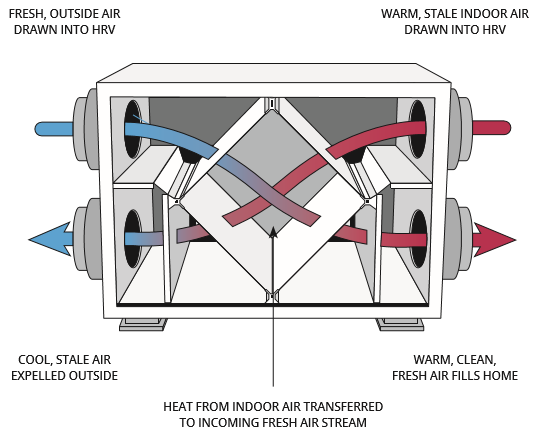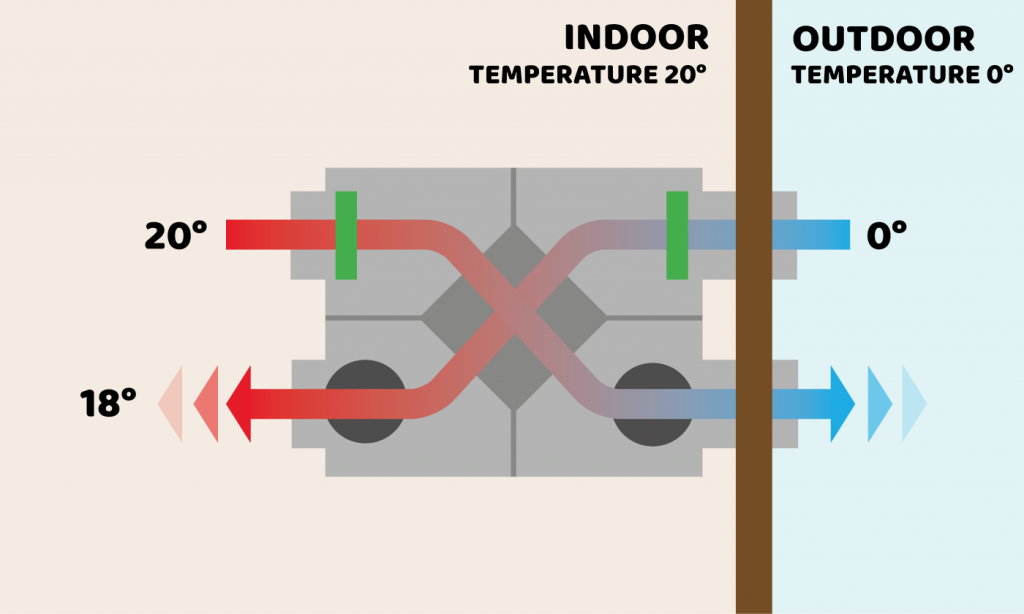The All-Inclusive Guide to the Uses of Heat Recovery Ventilation in Modern Structures
Heat Recovery Ventilation (HRV) systems represent a substantial innovation in developing modern technology (HRV Heat Recovery Ventilation). They supply a method for trading stagnant indoor air with fresh exterior air while lessening energy loss. This strategy not just improves interior air high quality yet likewise contributes to energy performance in both residential and industrial structures. Understanding the numerous applications and benefits of HRV can expose its essential function in modern-day style and sustainability initiatives. The implications of this innovation deserve exploring additionally
Understanding Heat Recovery Ventilation Solutions

Many modern buildings focus on energy effectiveness, recognizing heat recovery ventilation (HRV) systems is crucial for maximizing indoor air quality and lowering power intake. HRV systems function by moving warmth from stagnant interior air to inbound fresh air, properly keeping comfy interior temperature levels while minimizing energy loss. These systems include a warm exchanger, fans, and ductwork that help with the flow of air. During winter months, HRV devices catch and reuse warm from the outbound air, while in summer, they can help cool inbound air. By continually trading air, HRV systems also lower humidity and the concentration of indoor toxins. Correct installment and maintenance of HRV systems are important for their efficiency and effectiveness in improving overall building efficiency and convenience.
Advantages of Heat Recovery Ventilation
Heat recovery ventilation systems use countless advantages that boost both energy effectiveness and indoor air quality in modern-day structures. By capturing and reusing energy from exhaust air, these systems significantly reduce cooling and heating costs, bring about lower power usage. They preserve a steady circulation of fresh outdoor air, decreasing the threat of indoor air pollutants and allergens. This continuous exchange aids control moisture degrees, avoiding mold and mildew growth and ensuring a much healthier living environment. Furthermore, HRV systems add to sustainability objectives by decreasing general carbon impacts. Their capability to maximize ventilation without sacrificing thermal convenience makes them a valuable addition to modern building style, advertising both economic and ecological advantages.
Applications of HRV in Residential Structures
As house owners increasingly prioritize power efficiency and indoor air top quality, the applications of warmth recovery ventilation (HRV) systems in household structures have actually become a lot more prevalent. HRV systems are especially beneficial in securely secured homes, where preserving fresh air circulation is vital for protecting against moisture accumulation and interior pollutants. They efficiently transfer warmth from outward bound stagnant air to incoming fresh air, decreasing power prices connected with heating and cooling. Furthermore, HRVs can improve convenience degrees by managing moisture and temperature level. They are additionally versatile for numerous household layouts, consisting of single-family homes and multi-unit structures. Generally, incorporating HRV systems supports sustainable living practices while making certain a much healthier interior setting for occupants.
HRV in Commercial and Industrial Settings
In commercial and commercial settings, the execution of heat recuperation ventilation (HRV) systems has actually come to be significantly essential for enhancing energy efficiency and maintaining air high quality. These systems successfully transfer heat from exhaust air to incoming fresh Resources air, minimizing the demand for additional heating or air conditioning. This not only decreases power prices yet likewise adds to sustainability initiatives. Industries such as production, warehousing, and workplace buildings benefit significantly from HRV systems, this page as they help control temperature and moisture degrees, making certain a comfy and productive atmosphere. In addition, HRV systems help in eliminating impurities and excess dampness, improving indoor air top quality. As guidelines around air quality end up being stricter, the adoption of HRV technology is likely to expand, making it an essential element of modern-day industrial and industrial facilities.
Future Fads in Heat Recovery Ventilation Innovation

Regularly Asked Questions
How Does Heat Recovery Ventilation Effect Indoor Air Top Quality?
Heat recovery ventilation significantly improves interior air high quality by continually trading stagnant interior air with fresh exterior air while recouping power. This procedure lowers pollutants, preserves suitable moisture degrees, and assures a much healthier setting for residents.
Can HRV Systems Be Set Up in Existing Structures?
HRV systems can certainly be installed in existing structures. Retrofitting might require adjustments to ductwork and air flow designs, however it substantially improves energy performance and interior air high quality, making it a feasible choice for older frameworks.
What Maintenance Is Required for HRV Equipments?

Exist Particular Climates Where HRV Is More Reliable?
Heat recovery ventilation systems are especially effective in environments with considerable temperature distinctions between periods. These systems enhance energy efficiency by recovering warmth from exhaust air, making them excellent for both cold and moderately cozy settings.
Exactly How Do HRV Solutions Affect Energy Costs?
